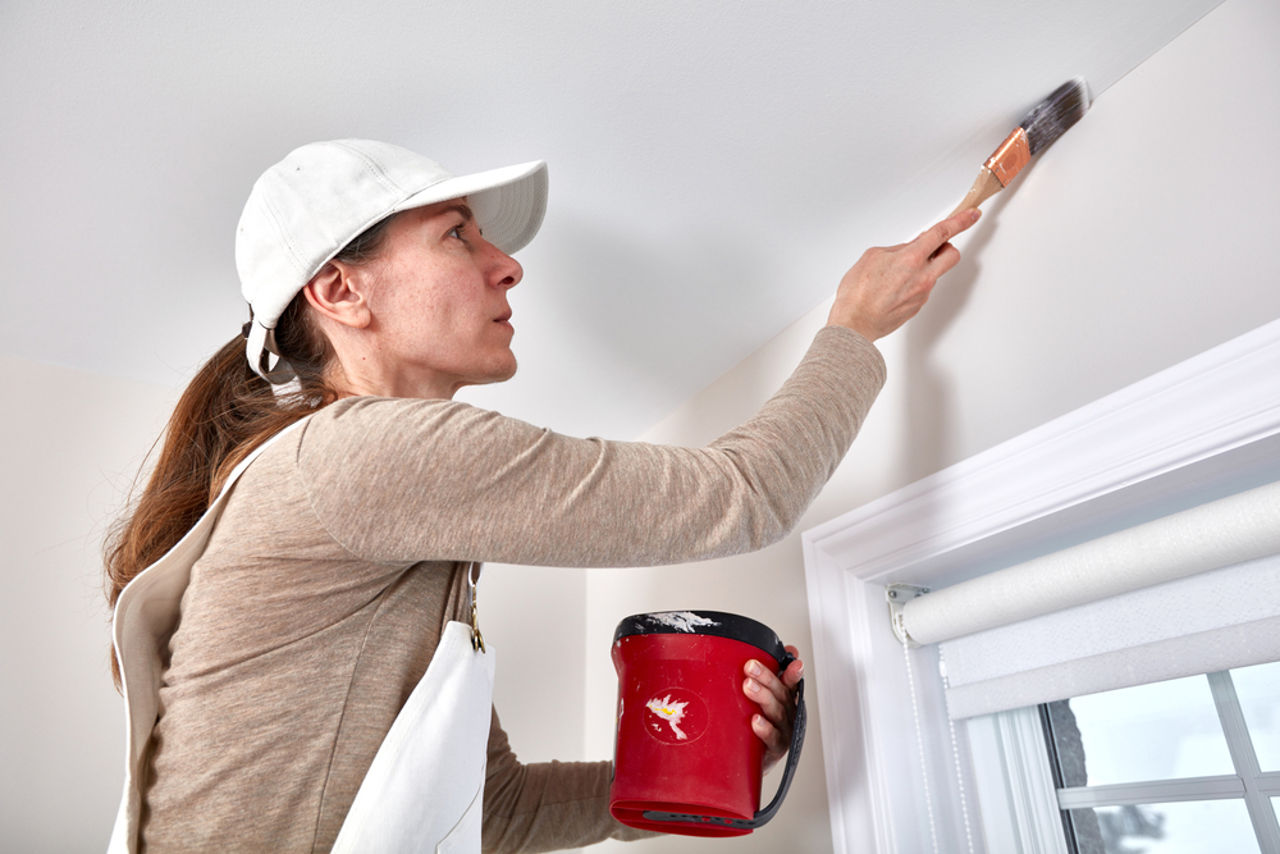"My wife is a house painter... so what's the problem?"
A growing number of women are entering the construction industry to build their careers, embracing their passion for the trade. In a sector where 90% of jobs are held by men, how do these women live their professional lives?
Marion Polge, University of MontpellierAgnès Paradas, University of Avignon Caroline Debray, University of Montpellier and Colette Fourcade, University of Montpellier

Above all, are we witnessing a transformation of the building crafts sector or, more broadly, a change in society?
Thestudy carried out by the CoCréatec Chair (University of Montpellier Foundation), funded by the European Social Fund (2016-2018), shows that women are now entering this sector with new ambitions, bringing a breath of change that is driving improvements in overall performance.
Even if our survey shows that only 60% of craftsmen consider the arrival of women in their company to be somewhat or very favorable, the trend towards gender diversity in certain trades is becoming a reality. We interviewed men and women, company directors, employees and stakeholders working in the construction sector. All agreed on the need to give women genuine status as managers and operative craftswomen, in particular by combating stereotypes.
This is what emerges from the series of verbatims below.
Getting around the physical obstacle
Some building trades are still very arduous, especially in structural work (activities contributing to the construction of a building's framework): handling, transporting loads, physical labor.
"I'm supposed to work until I'm 73, can you imagine redoing a ceiling?"
"There's still a lot of handling, and for me that's already an obstacle to a woman doing this job."
But the activities of construction companies are not limited to these physical aspects:
"Apart from lifting very heavy weights, a woman can perform the same tasks as a man."
Physical difficulty remains an obstacle for some trades in the collective mind, while others, such as carpentry, are seeing gender diversity take root in training centers.

Robert Kneschke/Shutterstock
Nevertheless, it seems possible to overcome this physical obstacle. Firstly, technical developments are making it possible to reduce the physical load, making it easier for women to enter the workforce, but also lightening the load for men. Secondly, the women we interviewed show great ingenuity in avoiding physical obstacles (recruitment of employees, temporary workers, collaboration with other companies, positioning on adapted work sites, etc.). In the end, physical difficulty seems to be more present in people's minds than in the reality of work sites.
The real problem today is that "we don't have all the trades". CVs submitted by women are absent from certain professions; girls are also virtually absent from certain training courses, despite the pro-mixity policy launched by the French Ministry of Education, then disseminated by the rectorats. So what's still standing in the way?
Perhaps the answer is... all of us
Parents, company directors, customers, colleagues, friends, husbands, neighbors, children... the study clearly shows that the weight of society is an enormous brake on women's motivation. The family circle exerts a particularly dissuasive pressure on young people. Even when parents are craftsmen themselves, they discourage their daughters from entering the profession:
"Right from the start, my father told me that painting was not a job for women."
The constraint generally expressed by women entrepreneurs is also found in this sector: family responsibilities. These are emphasized by the partners of women working in the construction sector, much more than by themselves: "we don't know what time we have to finish... it's a bit complicated".
Another obstacle to gender diversity in the building trades is a social impediment, conveyed through stereotypes associated with a divide between trades.
"There needs to be gender diversity in all trades, not just the building trades." (woman's voice)
"We're not properly informing our young people. I think it's deliberate. (a man lamenting the under-representation of women among young apprentices)
The testimonies expressing the obstacles posed by society are numerous. The study clearly shows that the roughness reproached to this sector is in reality only the reflection of a society identifying the building craftsman by an exacerbated virility. Take the example of a female carpenter to whom a customer replies:
"But are you the carpenter? Then I don't want an estimate, a carpenter is a man, I don't want your services!"
From "craftswomen" to "artisans
Stereotypes help structure our representation of others. In a way, they organize our view of society by categorizing the population. On the other hand, they run the risk of limiting the role of women to essentially administrative tasks, since the collective unconscious of the 20th century has taught us that there are "artisans' wives" and not "artisans". The "craftsman's wife" assists her husband, while the "craftswoman" assumes a managerial role.
Stereotypes become truly dangerous when they become prejudices, i.e. when they reach a discriminatory level that equates the role of second-in-command with incompetence in management. Our study shows that men and women share responsibility for these prejudices. The former take pleasure in their leadership, while the latter, shaped by a patriarchal upbringing, slip comfortably into the shadow of the former. More surprisingly, we found no generational divide in these behaviors.
"They're different": the traditional view
Stereotypes can be negative, stemming from material constraints due to the harshness of certain building activities.
"These are physical jobs... it's true that for a woman it's maybe a bit complicated."
But the stereotypical view also has non-discriminatory aspects, as expressed by both men and women. When it comes to management and organization, women are better:
"The difference on construction sites is organization. Already, they arrive on time for the meeting... They're much more rigorous than the guys." (male comment)

Mark Agnor/Shutterstock
Women are also valued in customer relations:
"In people's minds, having a woman do the work reassures them that the site will be clean.
Finally, the quality of relations with employees and partners is seen as superior for women. As a result, their role as operations manager seems to be becoming an integral part of the daily life of craft businesses, although it is neither formally assumed nor contractually generalized.
"What's a woman doing on the construction site?" hostile discrimination
The look can be downright disapproving:
"Sometimes you get the impression, you feel, that you're taking a place..."
More often, however, the problem of professional recognition arises.
"It's not a woman who's going to teach me my job."
In any case, mistakes, even simple clumsiness, are not tolerated from a woman on a building site (whereas they would be accepted from a male craftsman... ).
"I'm not sure I'd have been tested if I'd been a man": professional over-requirement
When a woman arrives on a construction site, she feels like she's being tested by her male colleagues. Her competence is a priori questioned:
"They express doubts... They don't trust."
A woman's mastery of the craft is superior to that of male artisans; she has to prove herself. But when competence is recognized and technical mastery is there :
"The men are even more impressed."
Are women the future of construction?
The adjective "entrepreneurial" used to describe women's motivation to enter the world of building crafts is justified on two counts: professionalization and capability.
Displaying technical professionalism
Women's orientation towards the building trades is a career choice (not a default choice):
"I didn't choose this job because it was for men; I chose this job because I liked it. (woman's words)
As a result, women are very rigorous in their work:
"When they say they do something, they do it." (man's words)

Gorodenkoff/Shutterstock
This (stereotypical?) representation of female professionalism by men seems to motivate their desire to welcome more women into the technical side of their profession. The men interviewed acknowledged that they are more vigilant about the quality of their work when there are women in their teams. In this way, gender diversity could help to boost business performance through a general improvement in professional rigor.
"I like the mix of men and women: I like it because we're all better together. (craftsman's comment)
The affirmation of capability, the foundation of entrepreneurial determination
Required to demonstrate their skills, women are confident in their abilities.
"A woman can stay herself, go all the way... there's no reason."
These motivations lead to an entrepreneurial approach, culminating in the decision to set up a business. Hence the high proportion of one-person start-ups created by women in our sample.
The individual, organizational, social and economic performance indicators we have measured all rise when there is gender diversity in the building trades. Not only does the climate calm down, but professionalism improves both within companies and on construction sites where several trades are involved. As a result, the interest in deconstructing the still numerous stereotypes is all the stronger.![]()
Marion Polge, Senior Lecturer in Management Sciences, University of MontpellierAgnès Paradas, HDR Associate Professor in Management Science, University of Avignon Caroline Debray, Senior Lecturer in Management Sciences - SME Management, University of Montpellier and Colette Fourcade, Honorary Senior Lecturer, University of Montpellier
This article is republished from The Conversation under a Creative Commons license. Read theoriginal article.